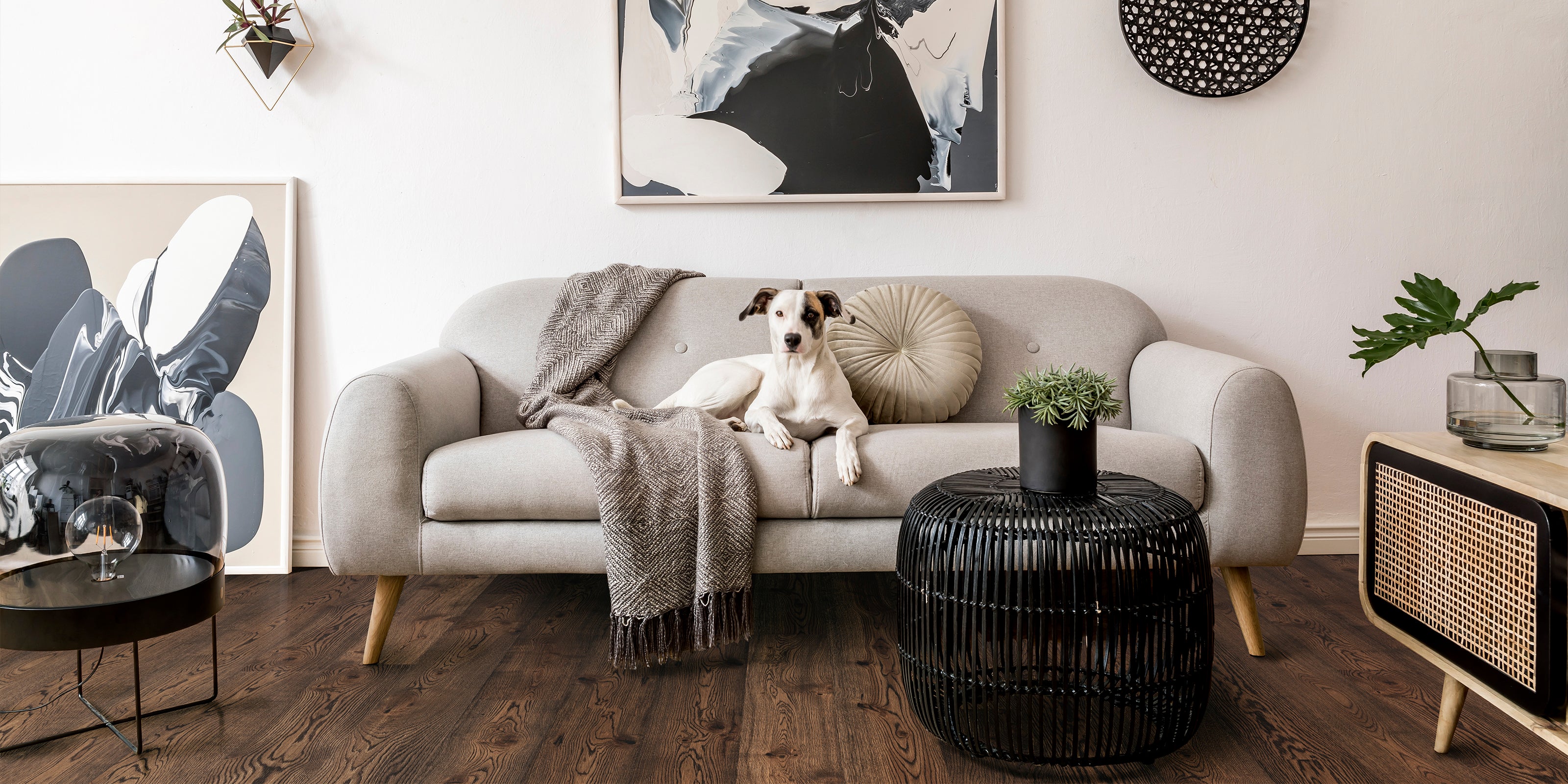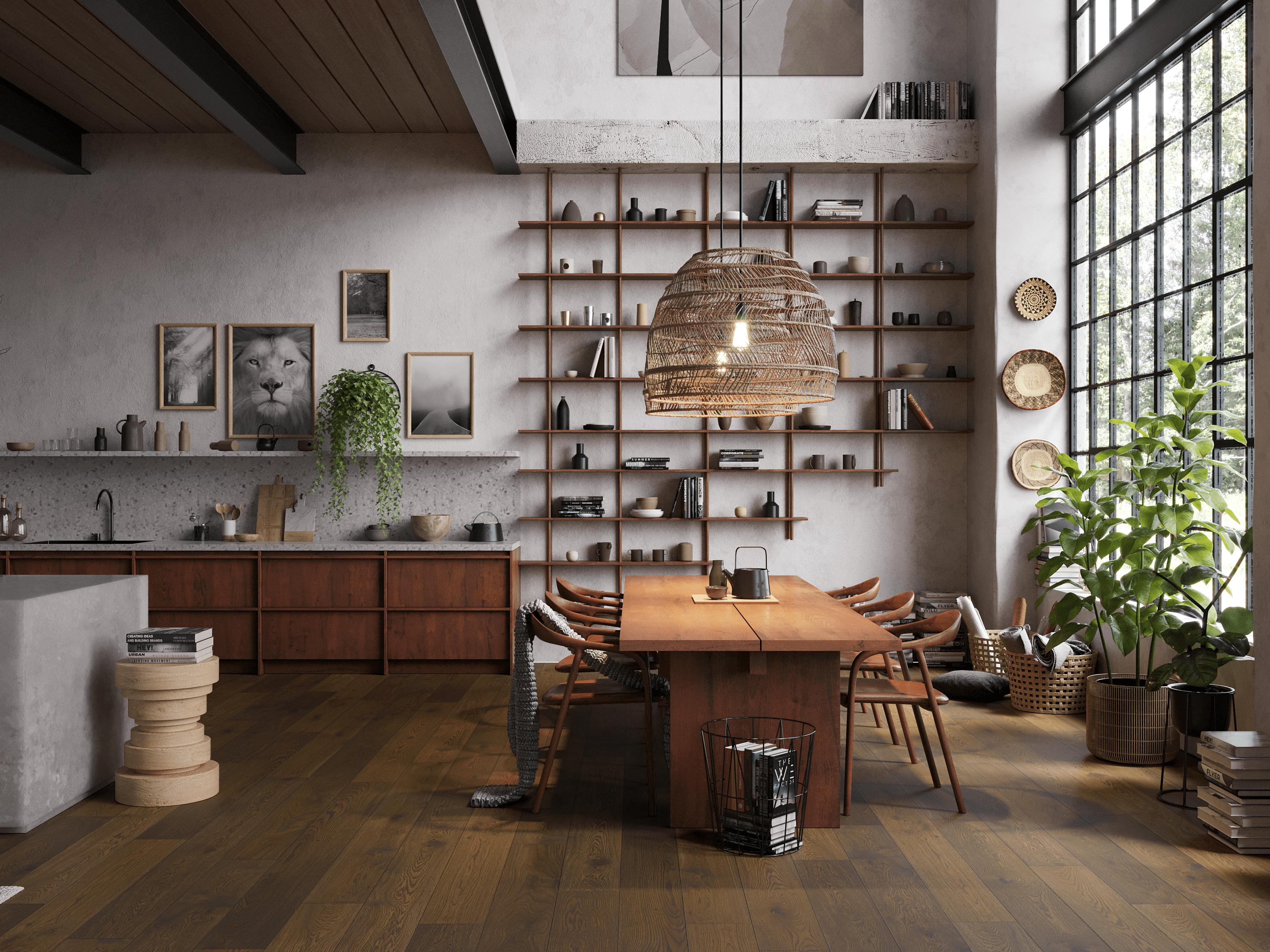
A wooden floor in your interior project brings authenticity to the forefront. The unique character and cosy, natural look of real wood make a statement in any interior.
But how do wooden floors measure up to other types of flooring, such as imitation wood floors? Let's analyse the different benefits and characteristics of the different flooring types.
The biggest difference between vinyl and laminate is in the construction of the floors. Vinyl is plastic flooring, while a laminate floor is constructed from a paper top layer with an imitation print and an HDF carrier.
Both are also equipped with a wear layer that provides the necessary protection against scratches or indents and they are fully resistant to water.
Both floors consist of separate planks, allowing any DIY enthusiast to install the floor with a click system. Vinyl, made of plastic, is defined by a sound-absorbing character. A laminate floor can also be self-installed, but you can experience walking noise due to the floating placement.
Such as vinyl and laminate, a tile with a wood look provides a sturdy foundation, is resistant to water and scratches, but requires experience to install.
Despite the advantages of vinyl and laminate floors, a good finish can make a real wood floor just as easy to maintain as an artificial floor. In general, there seem to be some misconceptions about this.
Research and development are the driving force behind our high-quality and innovative products. Thanks to various techniques and years of expertise from our R&D department, we have succeeded in optimising our wooden floors to be, like alternatives, scratch-resistant and with a waterproof surface.
Choosing a real wooden floor with a charming, authentic structure combines a classy appearance with a strong and durable character. Our real wooden floors are an example of how you can combine ease of use with warmth and cosiness. Discover their characteristics below.

First and foremost, our engineered hardwood flooring is an environmentally conscious choice, as it is not entirely constructed from solid wood.
The upper layer, which can vary in thickness, is crafted from solid wood, while the core layer is composed of plywood, HDF or pine. Thanks to this composition, they exhibit greater resistance to heavy loads, temperature fluctuations and changes in humidity. This leads to minimal expansion or contraction in comparison with solid wood flooring, making them compatible with underfloor heating systems.
Within this category there are three options. The choice between those types of flooring depends on your desired thickness of the genuine wood top layer:
Veneer flooring: < 0.7 mm
Hardwood flooring: < 2.5 mm
Parquet: > 2.5 mm
Depending on the thickness of the top layer you can sand it multiple times, resulting in a long lifespan.

Solid hardwood flooring consists of a single solid wooden plank that can be sanded even more resulting in a long lifespan. This type of flooring provides a highly robust and authentic appearance.
Compared to engineered hardwood flooring, solid flooring is more susceptible to temperature fluctuations due to its construction. A solid plank can slightly shrink or expand depending on the temperature differences during summer or winter.
